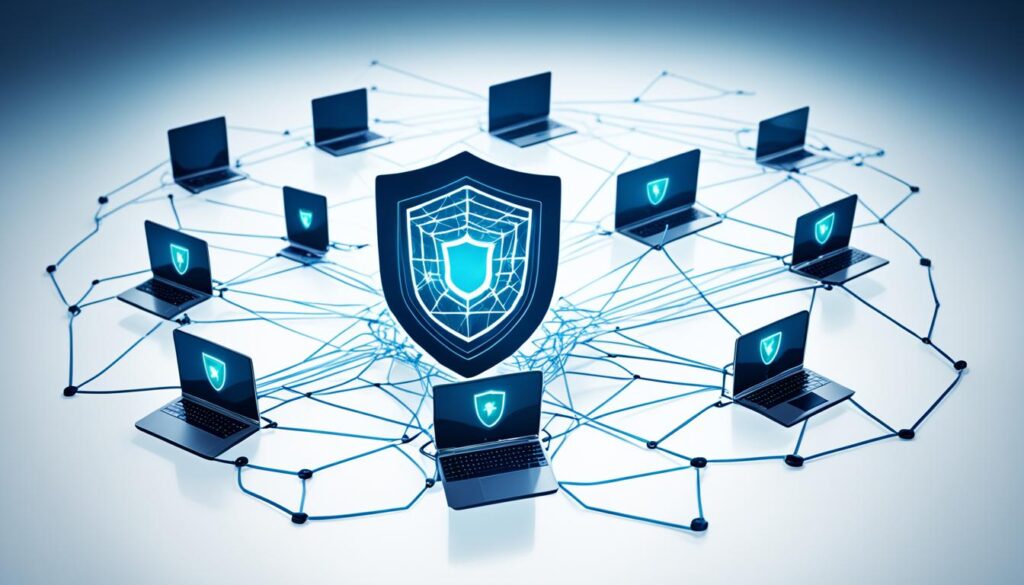What is IT Service Continuity Management | IT Support

What is IT Service Continuity Management | IT Support
In our fast-paced world, technology plays a big role in helping organizations succeed. But sometimes, things can go wrong. Natural disasters, cyber-attacks, or failures in infrastructure can disrupt what we do. This is where IT Service Continuity Management (ITSCM) becomes vital. It ensures we can handle any trouble without losing our competitive edge.

ITSCM protects our essential technology, including data and systems. It uses strong recovery strategies and backup plans, which allows businesses to lessen the harm of these incidents and continue providing important IT services. But why is ITSCM so essential today?
Key Takeaways:
- IT Service Continuity Management (ITSCM) ensures the continuous availability of an organization’s critical IT services during disruptive incidents.
- ITSCM involves implementing comprehensive plans, processes, and procedures to maintain business operations and minimize the impact of unexpected events.
- ITSCM is essential for organizations to maintain their competitive edge, protect their reputation, and safeguard their data and critical systems.
- By proactively planning and preparing for disruptions, ITSCM contributes to an organization’s overall business continuity and resilience.
- ARK Solvers, a leading IT solutions provider, specializes in delivering robust ITSCM strategies to ensure the continuous delivery of essential technological services.
Understanding IT Service Continuity Management
IT Service Continuity Management (ITSCM) helps keep an organization’s key IT services available and strong even in tough times. It includes strategies, processes, and steps to ensure the organization’s important tech, data, and systems are safe.
Ensuring Business Resilience
ITSCM is vital for a business to keep running during disruptions and recover quickly. It uses strong risk management and IT resilience to face threats like natural disasters and cyber-attacks, protecting the organization’s competitiveness and reputation.
Maintaining Critical Systems Availability
ITSCM focuses on keeping the organization’s most important IT systems and services working. It uses redundancy and failover systems to make sure business operations run smoothly even when unexpected problems occur. This helps the organization stay successful and resilient.
Minimizing Operational Disruptions
ITSCM plans for and acts fast during disruptive events to reduce their effect on daily operations. Disaster recovery, risk management, and resilience actions help businesses get back on track quickly, protecting the organization’s revenue, customer trust, and brand reputation.

What is IT Service Continuity Management
IT Service Continuity Management (ITSCM) is key to ensuring critical IT services stay online during disruptions. It’s a strategic method that safeguards essential tech services. This strategy includes thorough plans and processes to keep services running smoothly, even when the unexpected happens.
Definition and Key Objectives
ITSCM forms a vital part of a business’s disaster strategy. Its goal is to protect important IT systems and services. This protection helps keep services available and meet agreements with clients, even in tough times. Its main objectives are to reduce the impact of service disruptions, keep data safe, and quickly restore essential IT services.
Importance in Today’s Digital Landscape
In today’s world, businesses heavily rely on their IT to function. If these systems go down, it can lead to big losses and harm the company’s image. ITSCM is crucial for ensuring a business bounces back from such events. This readiness helps maintain a company’s edge in its market. It also supports the continued service to its customers and partners.

Key Components of IT Service Continuity Management
The core of good IT Service Continuity Management (ITSCM) includes multiple parts. They work together to make sure a company’s important IT services keep running. The main parts are:
Business Continuity Planning
Good business continuity planning is key for ITSCM. It means finding what a company needs most, spotting risks, and creating plans to keep things going if problems happen. With this in motion, companies can keep working even when hit by disruptions. This helps them keep a good name and stay ahead.
Disaster Recovery Strategies
Strong disaster recovery strategies help ITSCM. They let companies quickly fix their key IT parts after disasters like storms, cyber-attacks, or system breakdowns. This involves making sure data is always backed up, having alternative plans, like using backup systems, and setting up how to act when problems happen.
Risk Management and Mitigation
Dealing with risks is very important in ITSCM. It means looking for, grading, and dealing with threats to a company’s IT. This includes detailed risk checks, using ways to lower risks, and having plans for when things go wrong. By doing this ahead of time, companies protect their IT and keep important services rolling.
Implementing Effective IT Service Continuity Management
Keeping IT services running smoothly involves multiple steps. We focus on risk checks, storing data safely, having backups, and reacting to issues quickly at ARK Solvers. This plan makes our clients’ IT services tough against sudden troubles.
Risk Assessment and Planning
The core of ITSCM is knowing the risks and making solid plans. At ARK Solvers, we deeply look at all possible dangers and their effects on our clients. Then, we come up with unique strategies that keep the vital systems running even when things go wrong.
Data Backup and Recovery Solutions
Having strong data backup is key for ITSCM. ARK Solvers uses the latest strategies, like cloud backups and data copies stored off-site. These methods mean our clients can get their important data back fast after a crisis. It lowers the chance of losing data and speeds up the recovery process.
Redundancy and Failover Mechanisms
Being prepared is everything. ARK Solvers sets up backup systems and plans for when the main ones can’t work. This includes spare servers, networks, and powers that switch automatically if needed. These steps stop one small problem from affecting the whole service, keeping things running without a glitch.
Incident Response Protocols
Having a solid response to problems is just as essential. ARK Solvers and our clients make detailed plans for when something goes wrong. These plans include clear steps and ways to keep everyone in the loop. Having this in place means faster recovery and less time with services down.
FAQ
What is IT Service Continuity Management?
IT Service Continuity Management (ITSCM) ensures that vital IT services stay available and strong during disruptions. It sets up strong systems and plans to keep businesses running smoothly. This way, the impact of problems is kept to a minimum.
Why is IT Service Continuity Management important?
ITSCM helps organizations stay ahead of the competition and protect their image. It guards against threats like natural disasters, cyber-attacks, or system failures. By preparing ahead, essential IT services keep working, and big troubles are avoided.
What are the key components of IT Service Continuity Management?
ITSCM includes parts like business continuity planning and disaster recovery. It also includes risk management. These pieces ensure that vital IT services are steady and available.
How can organizations implement effective IT Service Continuity Management?
To make ITSCM work, organizations need to examine all tech areas and operations. They should focus on risk assessment, planning, data backup, and recovery. Redundancy, failovers, and good reaction plans are also key.
What are the benefits of IT Service Continuity Management?
The main benefits are business resilience and steady critical system operation. It lessens business downtime and safeguards the organization’s image and important data. All these elements help in facing surprise events.


